Introduction
Who would have thought that – with self-driving cars and Mars colonization on the horizon – the world would still be suffering from poverty and famine? As of mid-2020, there were nearly 690 million people living under the extreme poverty line, i.e. for less than $1.90 per day.
Although charities and NGOs have been working tirelessly to eradicate global poverty, there’s still a long way to go. In the following article, we’re going to take a look at how poverty is defined, how it impacts children, and what can be done to alleviate poverty.
What is poverty?
Poverty is all around us – it’s a phenomenon that some of us have experienced first hand, while others only heard of but never had to deal with. Being poor means different things to different people, that’s why it’s worth starting with a definition of poverty. The World Bank associates poverty with deprivation in well-being – it means being hungry, lacking shelter, being illiterate, or being sick and not having anyone to care for you.
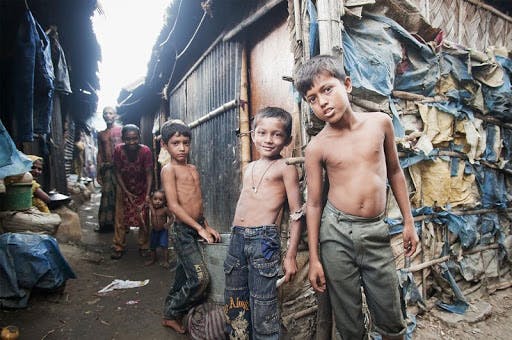
If you’re wondering whether it’s possible to translate poverty definition into a number, then it is, however, various poverty lines apply:
- $3.20 a day for people in "lower-middle-income" countries, such as Egypt or India,
- $5.50 a day for "upper-middle-income" countries, such as Jamaica or South Africa.
- $21.70 a day for high-income countries, like the US.
Reducing poverty to financial terms only is a simplification, and it’s necessary to take a look at different types of poverty to better understand its origins. According to Eric Jensen, there are 6 poverty types:
- Absolute poverty – takes place when a family’s income isn’t sufficient to meet their basic needs such as shelter, access to safe drinking water, education, and healthcare. It’s country dependent.
- Relative poverty – occurs when a household’s income is insufficient to keep up with the average family’s living standards.
- Situational poverty – as the name indicates, it’s caused by a sudden event such as a divorce, death of a family member who acts as the breadwinner, or a job loss.
- Generational poverty – occurs when your family is poor and as a result, you’re born into poverty.
- Urban poverty – happens in large metropolitan areas (of 50,000 people or more). Urban poverty causes stress related to crowding, violence and noise which the government is unable to solve.
- Rural poverty – relates to destitution in rural areas specifically, and includes issues such as: sparse job opportunities, difficulty in accessing quality education, unavailability of other social services
Now that you understand what poverty is, let’s move onto discussing the subject which is particularly heartbreaking – children in poverty.
Children in poverty – facts & causes
Eradicating global poverty will be impossible if organizations and governments don’t prioritize youth welfare programs.
It’s important to understand that children poverty is a result of a vicious cycle. Parents who can’t escape poverty themselves are incapable of securing a better future for their children. The same fate will be passed on from one generation to the next until this chain reaction is broken.
To understand the full scale of child poverty, it’s worth taking a look at the statistics.
As mentioned earlier, in mid-2020 there were over 688 million people living under the extreme poverty line. Children under the age of 14 made as many as 44% of this group – a staggering 266 million!
Here are the top obstacles that are keeping children in poverty:
- Lack of healthcare. In the poorest regions, children die or deal with life-long consequences of diseases that are easily preventable or treatable in the developed parts of the world.
- Malnutrition. Lack of proper nutrition cripples children’s development in many ways – not just their physical, but also intellectual capabilities.
- Lack of access to education. Without an education, potential career paths are scarce, and most children are likely to remain poor for the remainder of their lives.
What steps should the governments and NGOs take to help children escape poverty?
- Limiting bureaucracy. Children welfare programs might be strictly controlled or limited by governments – if not due to their policies, then as a result of complex decision-making processes. Social programs might also not be promoted in the poorest regions, making it hard to reach the poorest children.
- International, joint efforts. Charities and NGOs need to work with one another, as well as with country governments and organizations like the WHO or World Bank. Cooperation is key to making a lasting difference across the entire globe.
- Programs for parents and adults. If a child is to escape poverty, it’s crucial that its parents are given the means to earn enough money to raise their social status. Not to mention, a well-nourished, healthy child has a better chance of getting the right education and climbing the social ladder, which we elaborate on in our next section.
How poverty influences education
Access to education should be everyone’s right, yet over 175 million children globally are not enrolled in pre-primary education, with only 1 in 5 children being in school in low-income countries. Poverty and education are directly interlinked, and if the issue of poverty isn’t promptly addressed then the quality of education, as well as access to it, will remain limited.
You might want to ask – how does poverty impact education? There are at least 6 ways in which poverty influences education:
- Literacy gap – low-income parents are less likely to sing, read, and talk with their kids, which limits their exposure to the written and spoken word. This has its confirmation in statistics. Poor children have seen and heard 30 million fewer words than their wealthy counterparts.
- High mobility – poor families tend to have a nomadic lifestyle, they often change locations in search of employment. This forces the kids to drop out of one school and enroll in another, which has an adverse effect on learning.
- Impaired brain development – good nutrition is necessary to support proper brain development. Unfortunately, poor families are less likely to afford good quality food. Kids often go to school without breakfast – hunger makes it harder for them to focus.
- Poor mental and physical health – poverty unavoidably leads to stress from bad living conditions, not enough food, or violence. As a result, poor children suffer from mental conditions that limit their cognitive development.
- The necessity to support the parents – more often than not, children have to choose work over education in order to financially support their families, which are unable to provide enough food for the household.
- Not being able to get to school – it’s not uncommon for kids living in poverty to walk to school for hours as there is no school nearby and the road infrastructure is limited. By the time they reach school, they’re exhausted, which makes absorbing knowledge rather difficult if not impossible.
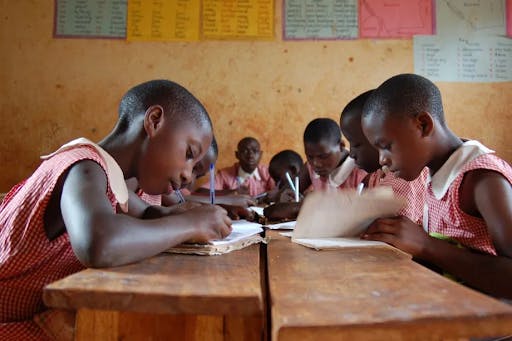
Are there ways to alleviate poverty in the world?
What Are The Ways To Reduce Poverty In The World
Luckily, the fight against poverty isn’t a lost cause, and there are steps we can take to reduce global poverty – let’s get to them now.
Governments must join the fight against poverty
One of the tactics for poverty alleviation is greater governmental involvement. It should be every government’s aim to help its citizens get out of destitution. There are countries that are leading the way in this difficult battle. For example, Brazil set up the Bolsa Familia program in 2003. The government transfers small amounts of cash to the poorest families in exchange for the warranty of children going to school and attending preventive health visits.
Supporting charities that fight poverty
There are numerous charities that dedicate their time and resources towards poverty reduction. These include:
- Against Malaria Foundation – distributes insecticidal nets to populations living in malaria-prone areas.
- D-Rev – designs and delivers world-class, affordable health technologies such as polycentric prosthetic knees for above-the-knee amputees.
- Evidence Action – focuses on scaling evidence-based and cost-effective programs aimed at reducing world poverty.
- Schistosomiasis Control Initiative – works with governments in sub-Saharan Africa to create sustainable programs to fight parasitic worm infections.
- Give Directly – helps extremely poor families through unconditional cash transfers via mobile phones.
Improve health
The poor often suffer from numerous diseases, as destitution forces them to live in bad conditions, they lack access to clean water and can’t afford nutritious food. All of this negatively impacts their health, which prevents them from working and providing for their families driving them further into poverty.
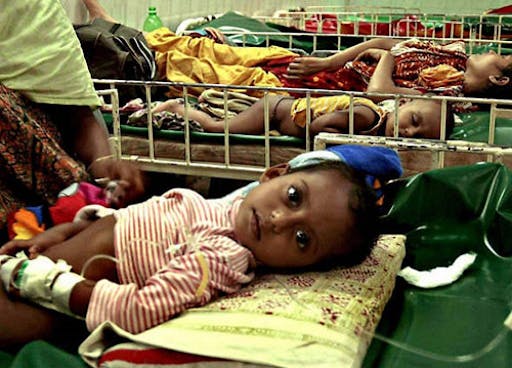
Increasing access to education
Research conducted by UNESCO indicates that if all developing country students had at least basic reading skills, then an estimated 171 million people could be lifted from extreme poverty. Ensuring that all adults had secondary education, would result in poverty reduced by 50%. Improving access to education would have a tangible effect on poverty alleviation.
Global citizens must be actively involved
The truth is, to win the fight against poverty, we must all join forces. There are many ways in which we can help, be it through financially supporting charities, volunteering at non-governmental organizations or by installing Altruisto. Part of the amount you spend during your shopping will go to selected charities working towards poverty reduction – at no extra cost to you.
Poverty in India
When discussing global poverty, it’s worth taking a look at the example of India. While the country is one of the world’s fastest-growing economies, it also has a deeply-fractured society. The impact of this social stratification can be seen not just through the lens of religious or cultural practices, but also the economical status.
As of May 2020, there were still 41 million people in India living under the extreme poverty line of $1.90. That’s the equivalent of the population of four countries – Greece, Portugal, Czechia, and Jordan – combined!
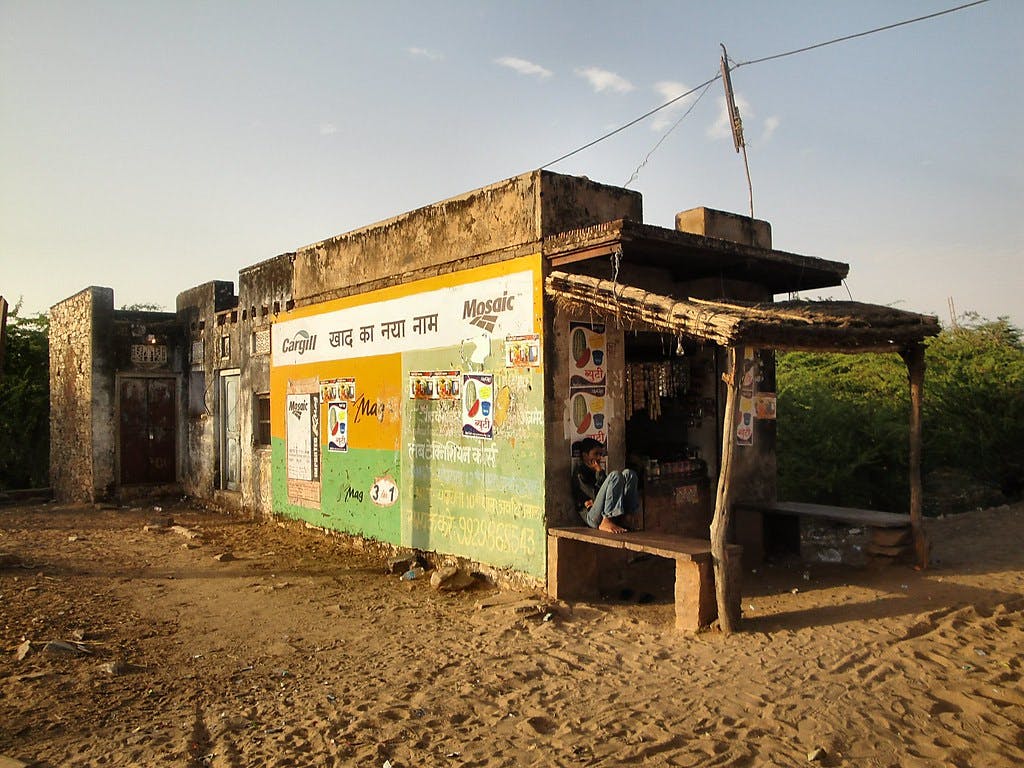
Top reasons for poverty in India
- Corruption. India has had its share of social welfare programs. However, many of them failed due to nepotism or mismanagement. This includes the $9 billion MNREGA program that aimed at helping the rural communities. Which brings us to…
- Uneven wealth distribution. According to Oxfam, India’s top 1% of the population holds 73% of the country’s entire wealth. To put this problem further into perspective – it would take a minimum wage, rural worker over 941 years to earn the yearly salary of a top-paid garment company executive.
- Low access to healthcare. If you were to take a wild guess which country has the highest maternal mortality rate, it’s likely you’d bet on one of the Sub-Saharan nations. However, the number of women who perish during or shortly after labour is the highest in India, standing at a shocking 17%. Also, 21% of children don’t live to see their fifth birthday.
- Lack of access to education. As mentioned in our previous section, low access to education, combined with no healthcare or malnutrition means that not many children can escape poverty when they become adults.
- The middle class is stratified. India’s middle class doesn’t speak in one political voice. While some people actively participate in politics, others are disengaged. Some engage in extreme religious parties, while others are pro-secular. These and other differences demobilize the political potential of India’s middle class.
With this in mind, here are 3 poverty alleviation programmes in India that we recommend taking a look at: Deworm the World Initiative, Give Directly, and Oxfam. You can read about these organizations below:
7 organizations that are battling in the war on poverty
With all of the above in mind, let’s now take a look at the organizations that are going to great lengths to win the war on poverty. All of the charities and NGOs mentioned below are evidence-backed and have been verified by independent evaluators: GiveWell, Charity Navigator, and The Life You Can Save.
I. Oxfam International
Oxfam International is one of the world’s biggest NGOs. The organization carries out a whole range of charitable work, which includes helping the poorest access education, healthcare, food, and clean drinking water.
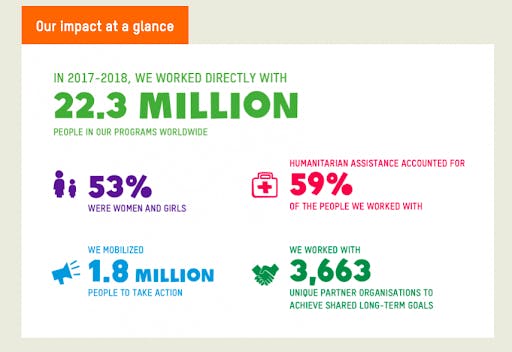
How to donate?
- Through the Oxfam website
- By installing Altruisto.
II. GiveDirectly
GiveDirectly is a unique organization on the charity landscape, as it lets you wire funds directly to people in need. Donate via their website and install Altruisto.
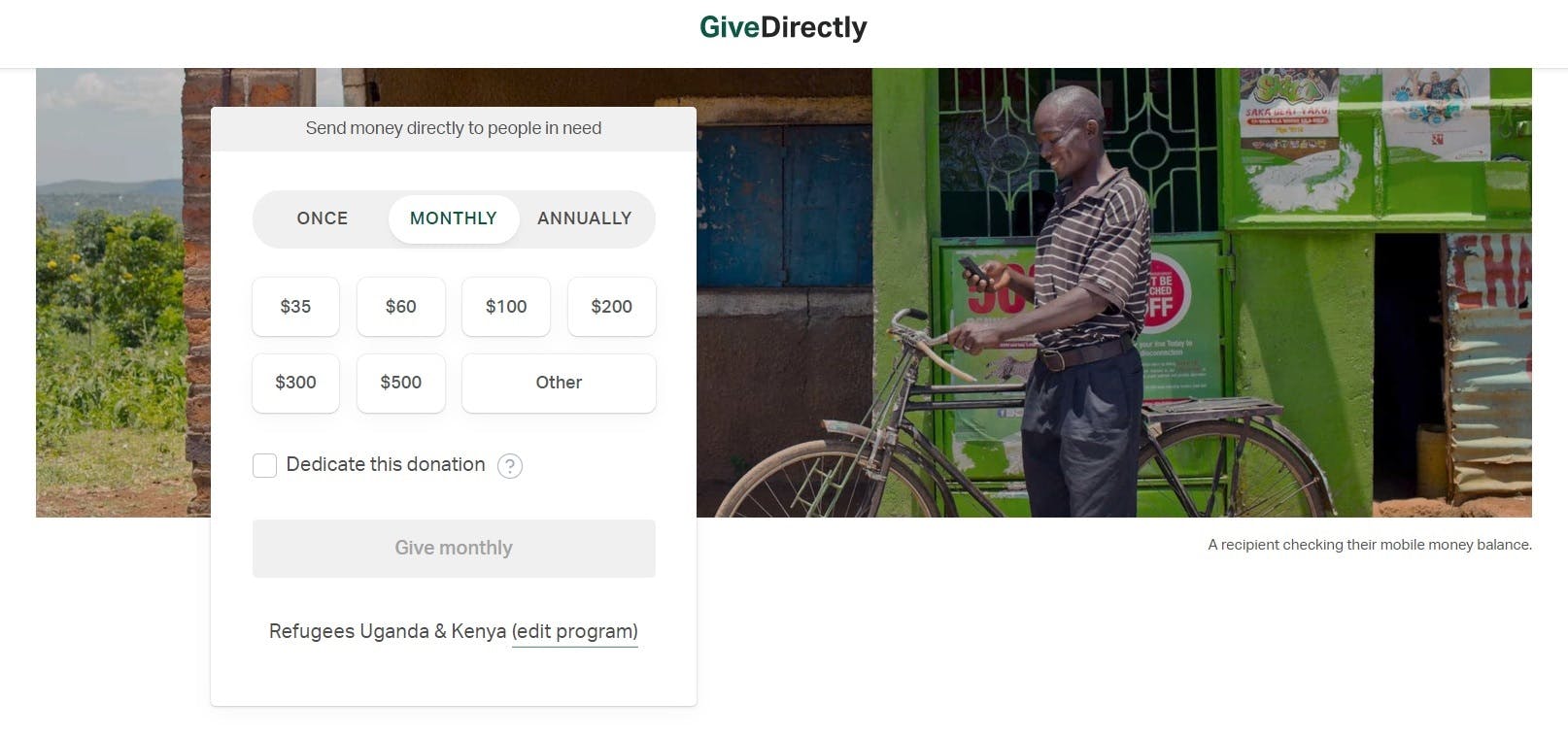
How to donate?
- Through the Give Directly website
- By installing Altruisto.
III. D-Rev
D-Rev is an organization that develops life-saving equipment and distributes it in the world’s poorest regions. So far, they’ve helped save hundreds of thousands of lives of infants and the disabled.
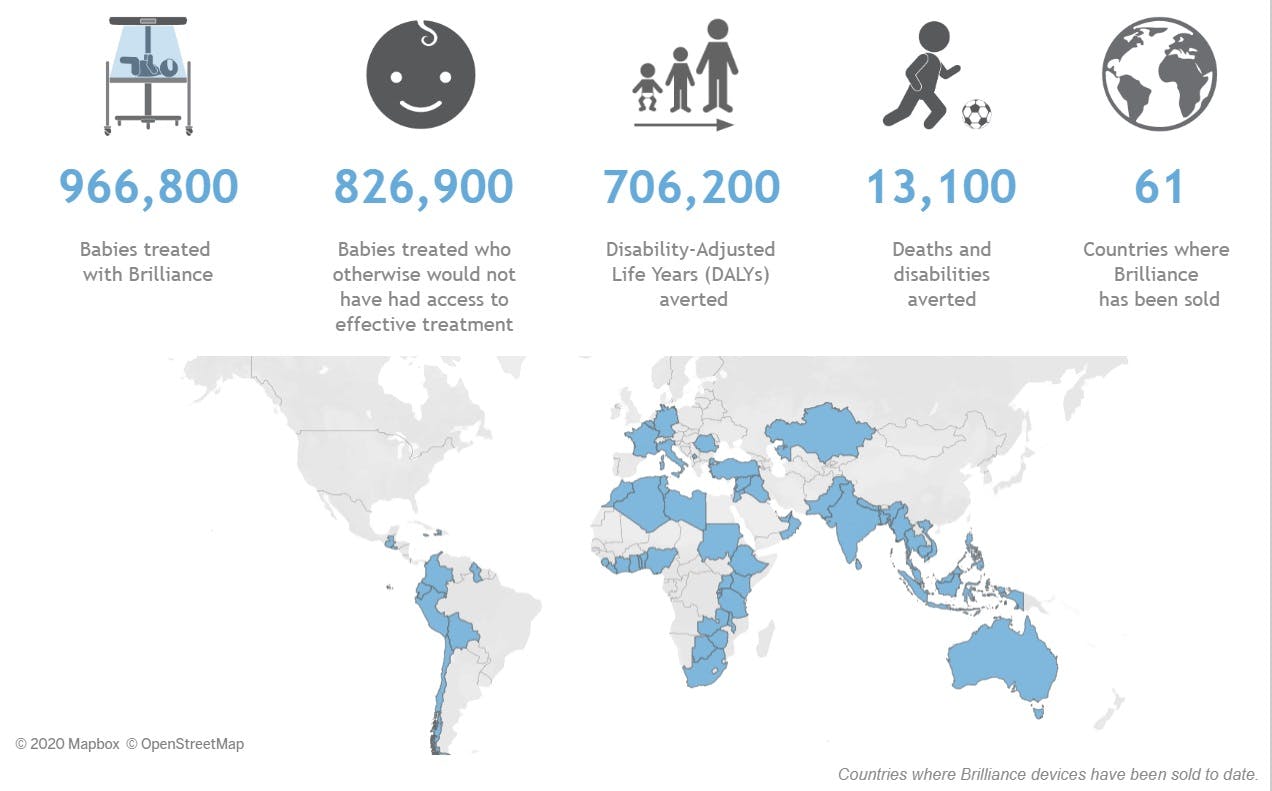
How to donate?
- Through the D-Rev website
- Through The Life You Can Save website.
IV. The SCI Foundation
SCI helps 15 governments in Sub-Saharan Africa through running deworming campaigns. So far, the foundation has provided treatment to over 180 million Africans, preventing schistosomiasis and helminthiasis – both parasite-borne diseases.
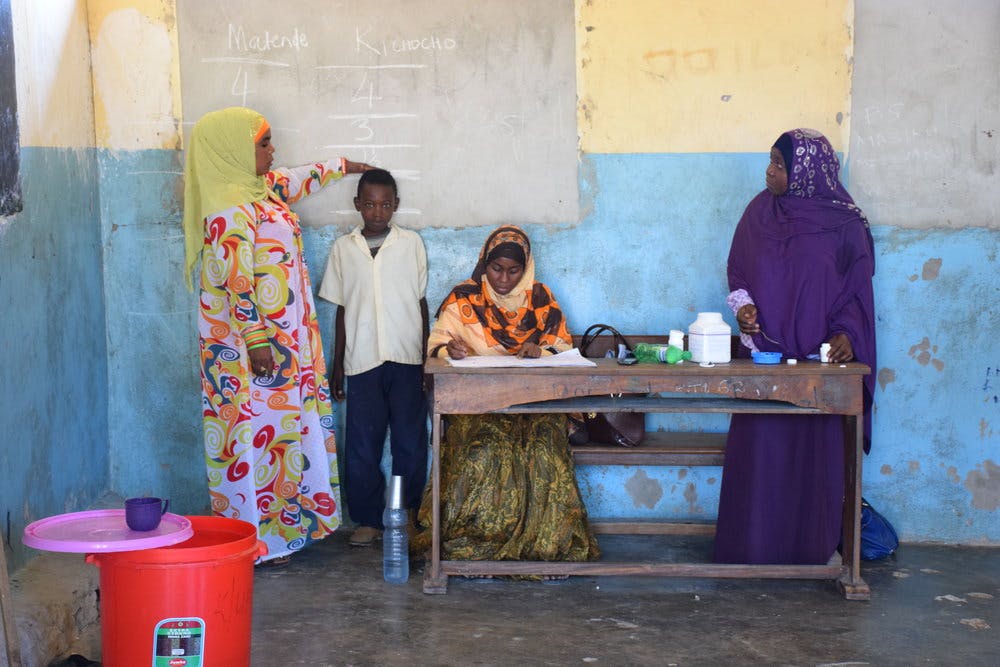
V. One Acre Fund
One Acre Fund helps 1 million smallholder farmers escape poverty by giving them the financial support they need to grow more crops.They also give a helping hand with distribution, provide various types of training, and offer consultations on market facilitation (i.e. which storage solutions to use and how to capitalize on fluctuating demand). The goal of One Acre Fund is to help its beneficiaries become financially independent to help them build a better future for themselves and their families.
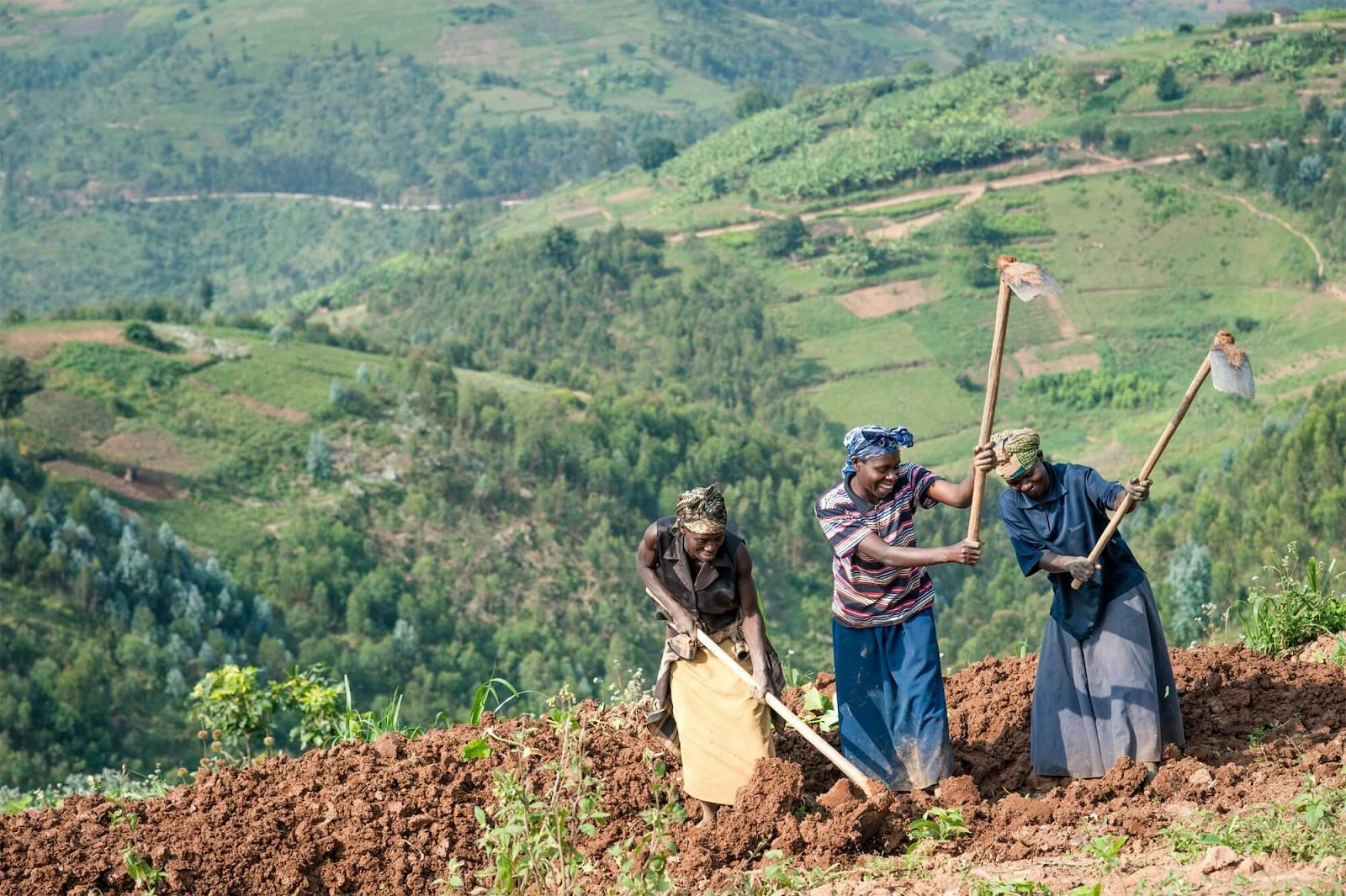
How to donate?
- Through the One Acre Fund website
VI. Against Malaria Foundation
The foundation distributes mosquito nets among the poorest households to help them prevent Malaria.
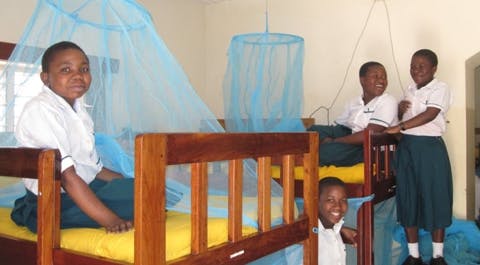
How to donate?
- Through the Against Malaria Foundation website
- By installing Altruisto.
VII. Helen Keller International (HKI)
HKI is a global organization that helps prevent diseases and vitamin A deficiency sight loss, as well as fights famine by helping farmers grow more food.
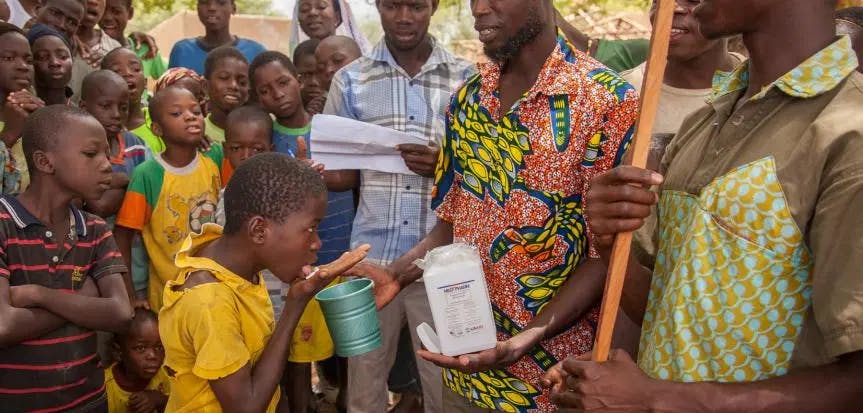
How to donate?
- Through the HKI website
- By making a tax deduction.
You can read more about all of the above-mentioned organizations in our article dedicated to the war on poverty.
Summary
Although global poverty is still a burning issue and a lot of work needs to be done, it’s not a lost cause! The only way to reduce poverty and change the lives of the millions of people suffering from it is cooperation. Global citizens, charities, and governments have to join forces against the war on poverty.
The good news is we can all contribute to this cause. Install Altruisto – a free web browser extension that lets you donate money to charities as you shop, at no additional cost to you!
When you purchase through our partners’ websites (including Aliexpress, Barnes & Noble, Booking.com, eBay, Etsy, and Microsoft), a portion of the money you pay will go to underfunded charities.
We work with evidence-backed, underfunded organizations like Against Malaria Foundation, SCI Foundation, and Give Directly.